This set of Advanced Power Systems Questions and Answers focuses on “Switchgear and Protection – 2”.
1. A protection system engineer is planning to provide the complete protection, he can achieve this by ___________
a) three phase fault relays and two earth fault relays
b) two phase fault relays and three earth fault relays
c) a two phase fault relays and three earth fault relays
d) a two phase fault relays and two earth fault relays
View Answer
Explanation: For the complete protection of the power system, one can use 3 phase fault relays and two earth fault relays so that to cover the entire zone of operation.
2. The given figure shows protection system scheme for one phase of generator. A high resistance fault occurs near the neutral end with the current distribution as marked. The slope of the relay is 10% and pick-up current of 0.15A.
The CT ratio is 500/5.
Will the relay operate under given circumstances?
a) True
b) False
View Answer
Explanation: Ioc = i1-i2
IRS = (i1+i2)/2
Relay will operate only if iR > k(i1+i2)/2+i0
I1 = 435/(500/5)
I2 = 400/(500/5)
Ir = i1-i2 = 4.35-4.0 = 0.35 A
i1+i2 = 4.175 A
k(i1+i2)/2+i0 = 0.1*4.175 + 0.15 = 0.5675 > 0.35
Therefore, the relay will operate.
3. We need the biasing of differential relay biased to avoid mal operation when used for transformer protection due to ____________
a) mismatch of CT
b) saturation of
c) difference in connection of both sides of CT
d) current setting mismatch
View Answer
Explanation: It is not practical to use CT of exact type, so the mal operation may occur due to mismatch of current transformers.
4.If the specified fault setting for a winding is mentioned as 20%, then what can be inferred about it?
a) If a terminal fault has its current limited to the full load rating, then 20% of winding from neutral end will be unprotected
b) If a terminal fault has its current limited to the full load rating, then 80% of winding from neutral end will carry current
c) If a terminal fault has its voltage limited to the full load rating, then 20% of winding from neutral end will be unprotected
d) Any of the mentioned
View Answer
Explanation: The fault setting implies that 20% of the neutral is unprotected.
5. The typical characteristic of the relay during loss of excitation is ____________
a)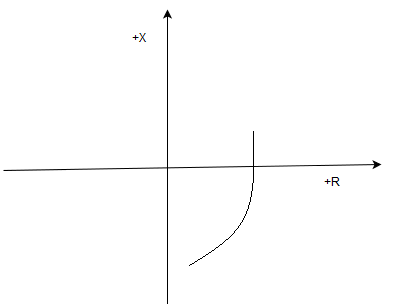
b)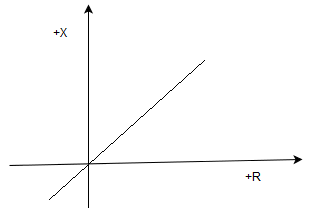
c)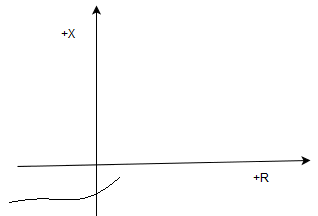
d)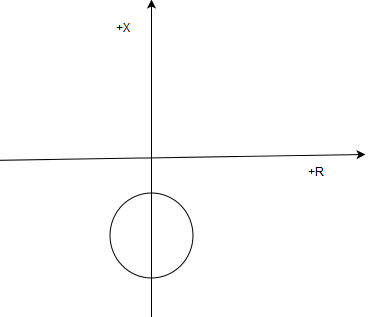
View Answer
Explanation: The loss of excitation leads to a characteristic of the negative resistance offered.
6. The standard system fault characteristic of the relay is _____________
a)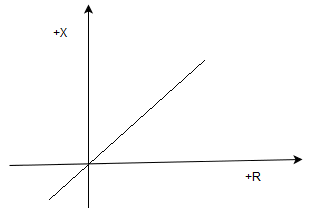
b)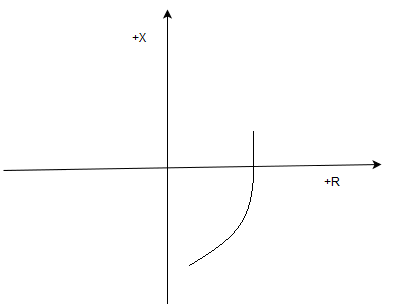
c)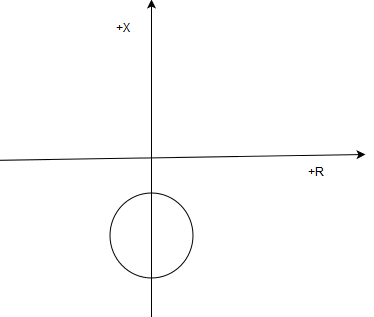
d)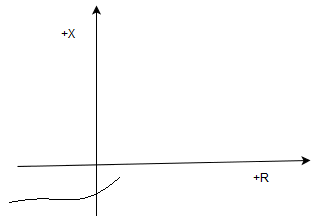
View Answer
Explanation: The typical fault characteristic shown by a relay is the linear impedance offered by the fault currents.
7. A longitudinal differential protection on stator can detect inter-turn on the stator.
a) True
b) False
View Answer
Explanation: Because inter-turn faults on the same phase of stator wdg does not disturb the balance between currents in neutral and high voltage CTs. Hence a transverse differential protection is used.
8. Bias is used in the relay protection to _______________
a) provide balanced sharing of current
b) reduce current level
c) deivert the current
d) none of the mentioned
View Answer
Explanation: Bias is predominantly used for providing the balance in the current distribution.
9. Unbalancing of an alternator may occur due to ____________
a) single phase fault
b) unbalanced loading
c) line breaking
d) all of the mentioned
View Answer
Explanation: All the mentioned reasons can cause unbalancing.
10. For the given earth fault for solidly earthed CT, the fault current as a percentage of the full load current is given as _______________
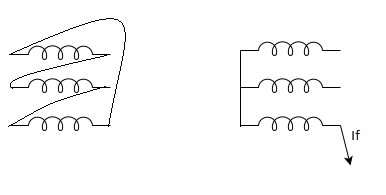
a)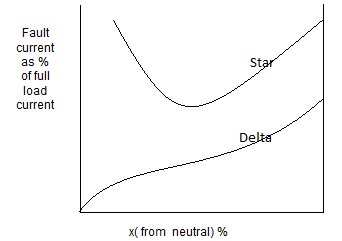
b)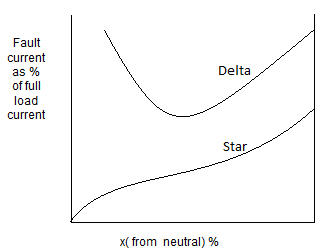
c)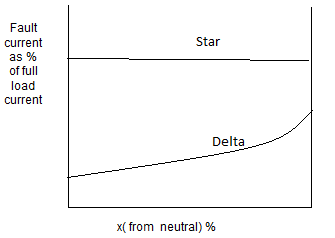
d)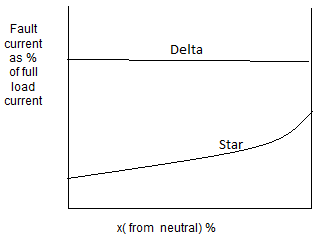
View Answer
Explanation: The line current in the delta side will rise from zero and star connection will have maximum current.
Sanfoundry Global Education & Learning Series – Power Systems.
To practice advanced questions and answers on all areas of Power Systems, here is complete set of 1000+ Multiple Choice Questions and Answers.
If you find a mistake in question / option / answer, kindly take a screenshot and email to [email protected]
- Apply for Electrical & Electronics Engineering Internship
- Check Power System Books
- Practice Electrical & Electronics Engineering MCQs
- Practice Electrical Engineering MCQs
- Apply for Electrical Engineering Internship
